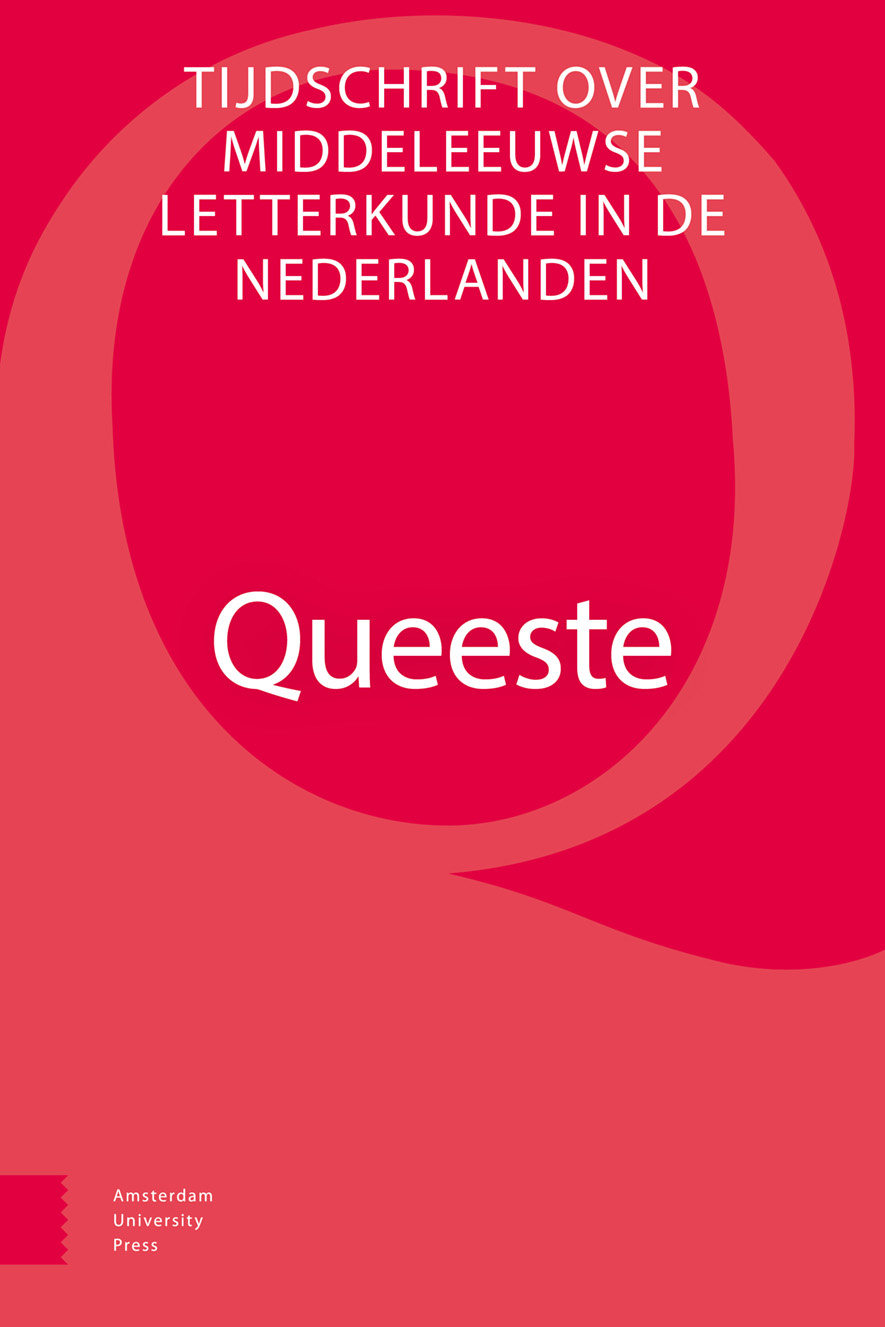- Home
- A-Z Publications
- Queeste
- Previous Issues
- Volume 30, Issue 1, 2023
Queeste - Volume 30, Issue 1, 2023
Volume 30, Issue 1, 2023
Language:
Dutch
- Artikelen
-
-
-
Ter inleiding: tussen Utrecht en Utrecht
More LessAuthors: Wim van Anrooij & Geert WarnarAbstract On Tuesday, June 14, 2022, the symposium ‘Middelnederlandse literatuur door de ogen van anderen’ (Middle Dutch literature through the eyes of others) took place in Leiden in the presence of Frits van Oostrom. The symposium was organised to thank him for the creative, inspiring and stimulating activities he developed at Leiden University between 1982 and 2002. After a short introduction, four of the Read More
-
-
-
-
Een verloren hoofdstukje van de Brabantsche yeesten?
More LessAbstract The manuscript tradition of Jan van Boendale’s Brabantsche yeesten (‘Deeds of the Dukes of Brabant’) is notoriously complicated. Between 1316 and 1351 Boendale regularly updated his chronicle with descriptions of recent events. Later, these new sections were also copied to complement transcriptions of earlier versions of the chronicle. In 1444, Heinricus van den Damme completed a luxuriously decorated co Read More
-
-
-
Medicijn voor de ziel
More LessBy Lieke SmitsAbstract In an early sixteenth-century printed book from the Low Countries, we find the first visual images that depict Christ with the attributes of a worldly physician. This imagery was already in use in Middle Dutch literature since the thirteenth century. Building on the Augustinian topos of Christus medicus, these devotional texts display interesting developments towards concretization and interiorization. This article gives a Read More
-
-
-
Francofobie, francofilie, Francophonie
More LessAbstract The sixteenth-century effort to strengthen and improve the Dutch language has long been considered in terms of francophobia: by rejecting French influence, such as loanwords, the Dutch language could emancipate itself. This article explores to what extent the postcolonial notion of Francophonie, used to describe the imposition of the French language in a colonial context, can improve our understanding of t Read More
-
-
-
Middelnederlandse en historische letterkunde na de ‘turbo-mediëvistiek’
More LessBy Bram CaersAbstract This contribution looks back on a period of 35 years of Middle Dutch Studies, through the perspective of the retirement of Frits van Oostrom, who played a central role in the field in the past few decades. Starting from a 1989 volume in which Van Oostrom, along with Frank Willaert and several other specialists of Middle Dutch Literature, looked towards the present and future of the field, I aim to gauge whet Read More
-
-
-
‘Dat onderwijzerschap is de kern van de hele zaak’
More LessBy Jaap de JongAbstract In conclusion to the colloquium organised in his honour, Frits van Oostrom was interviewed by Jaap de Jong. The following article presents a slightly shortened write-out of this interview, in which Van Oostrom shares his secrets as a writer, his passion for storytelling and his encounters with inspiring teachers.
-
Most Read This Month
Article
content/journals/09298592
Journal
10
5
false
en


